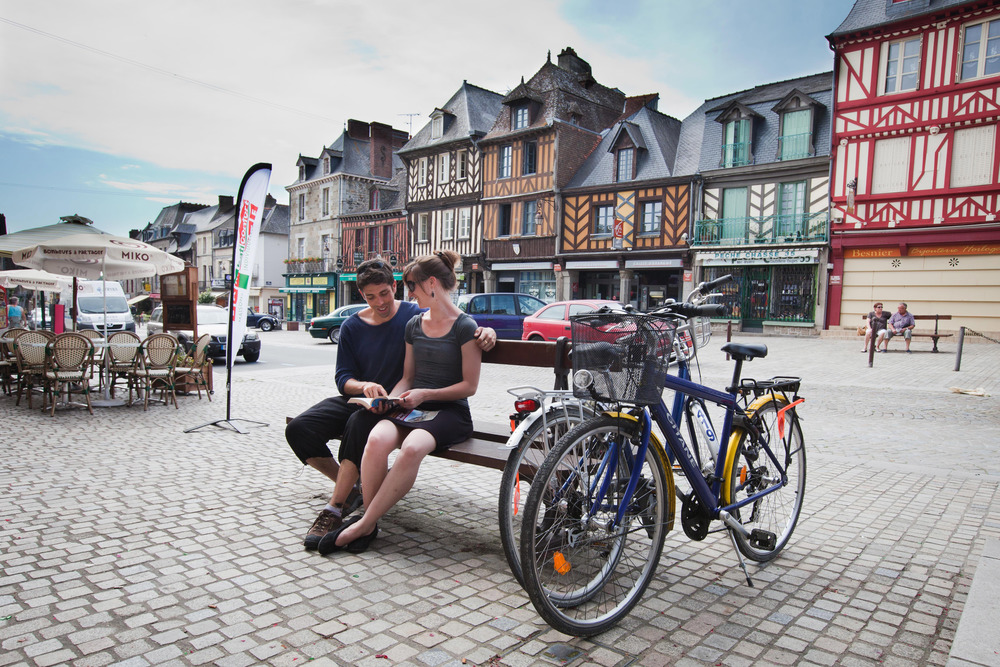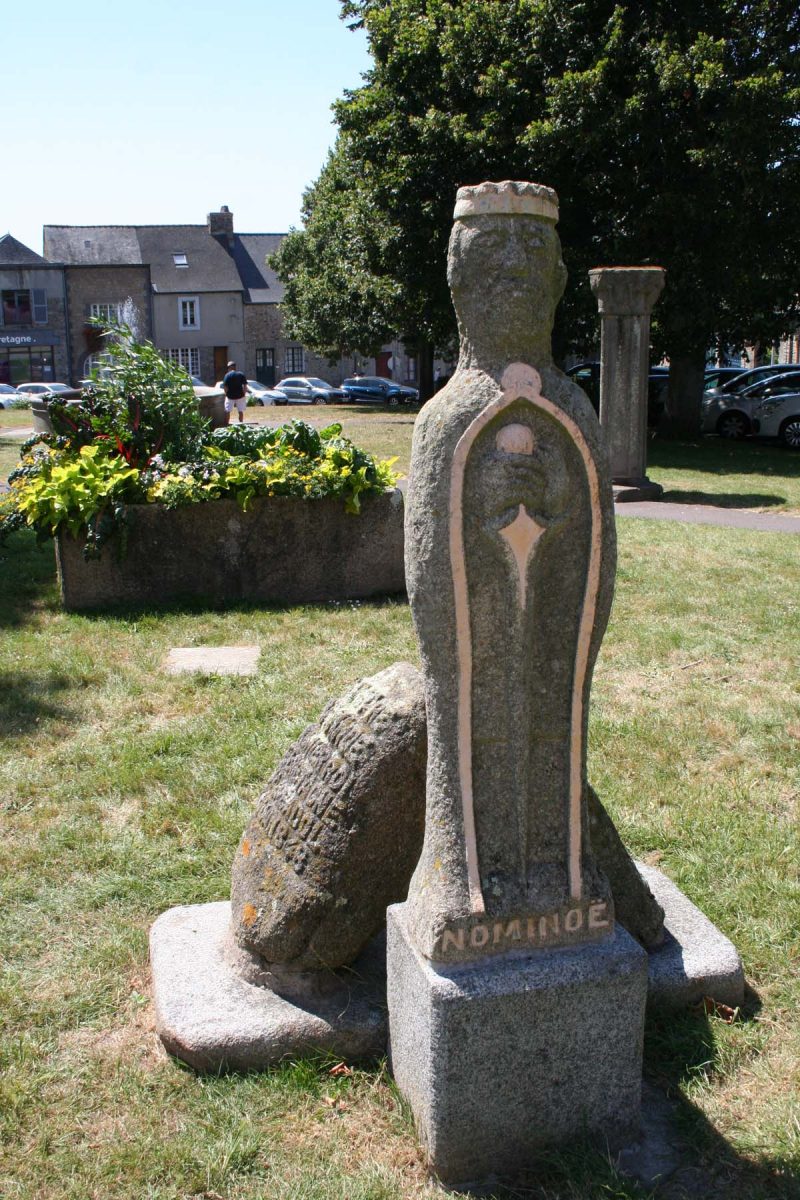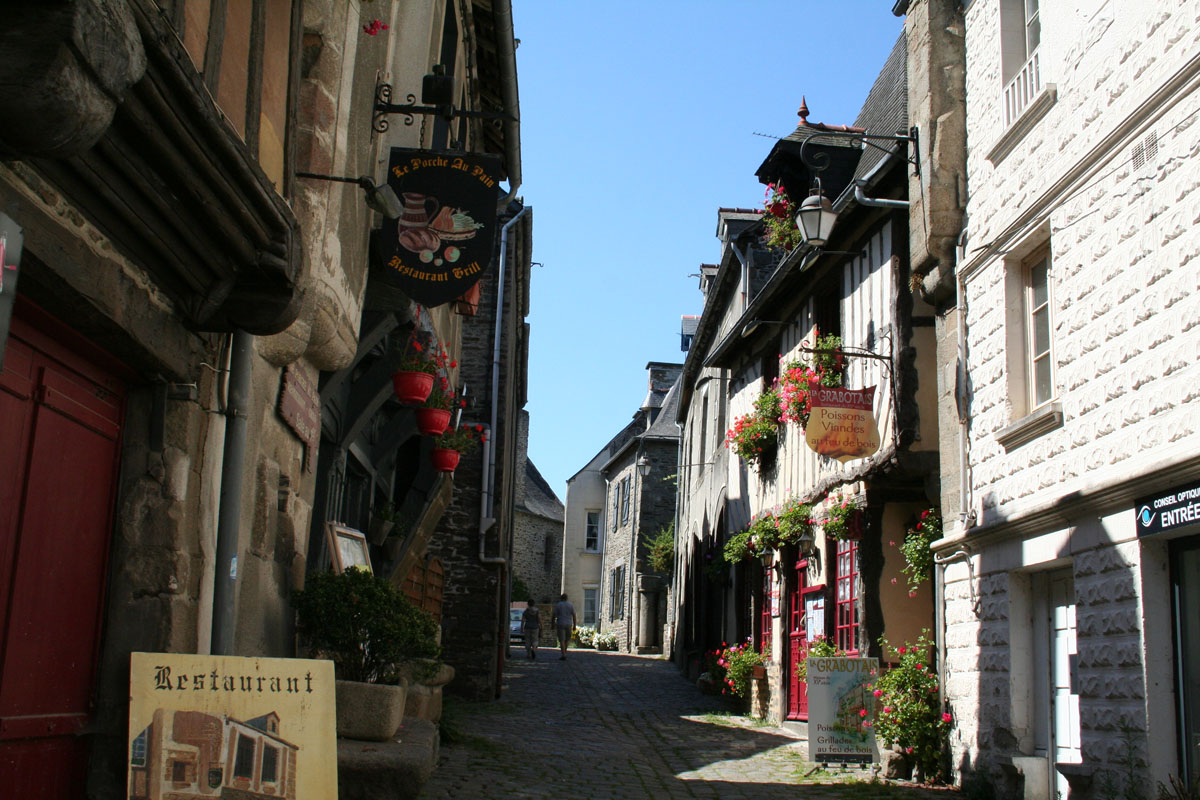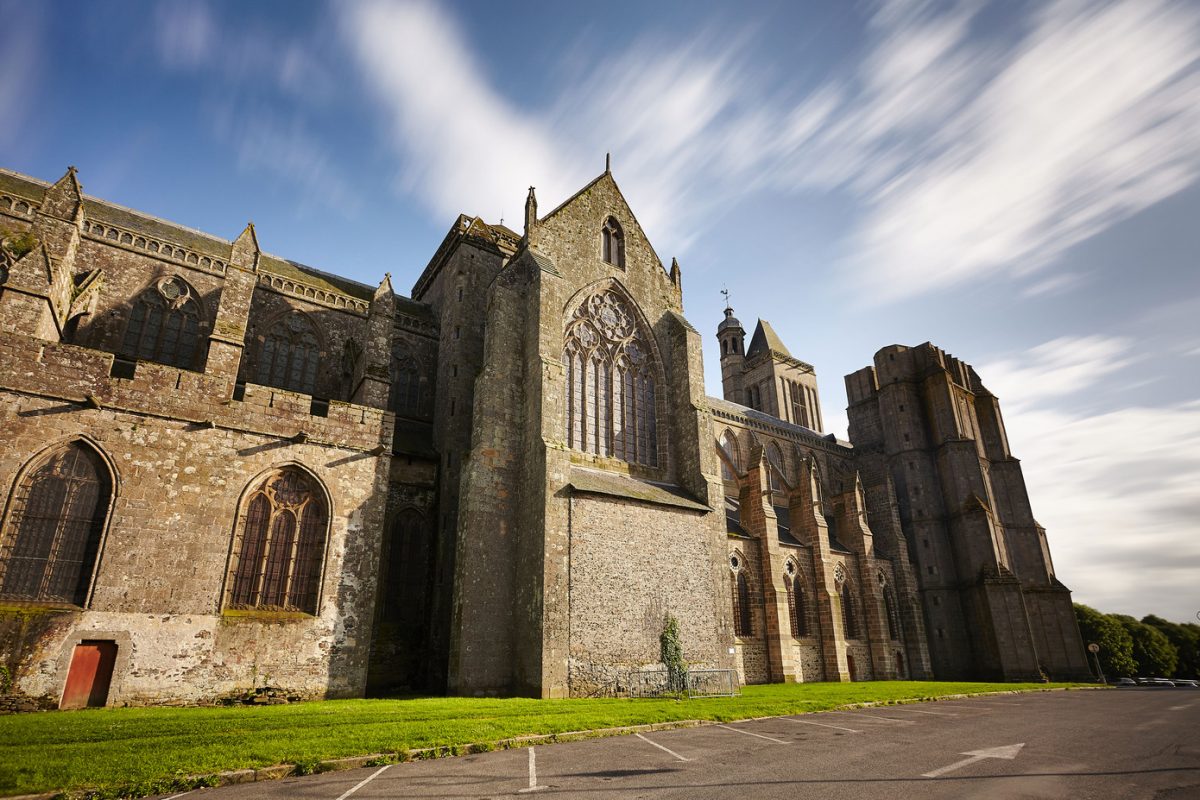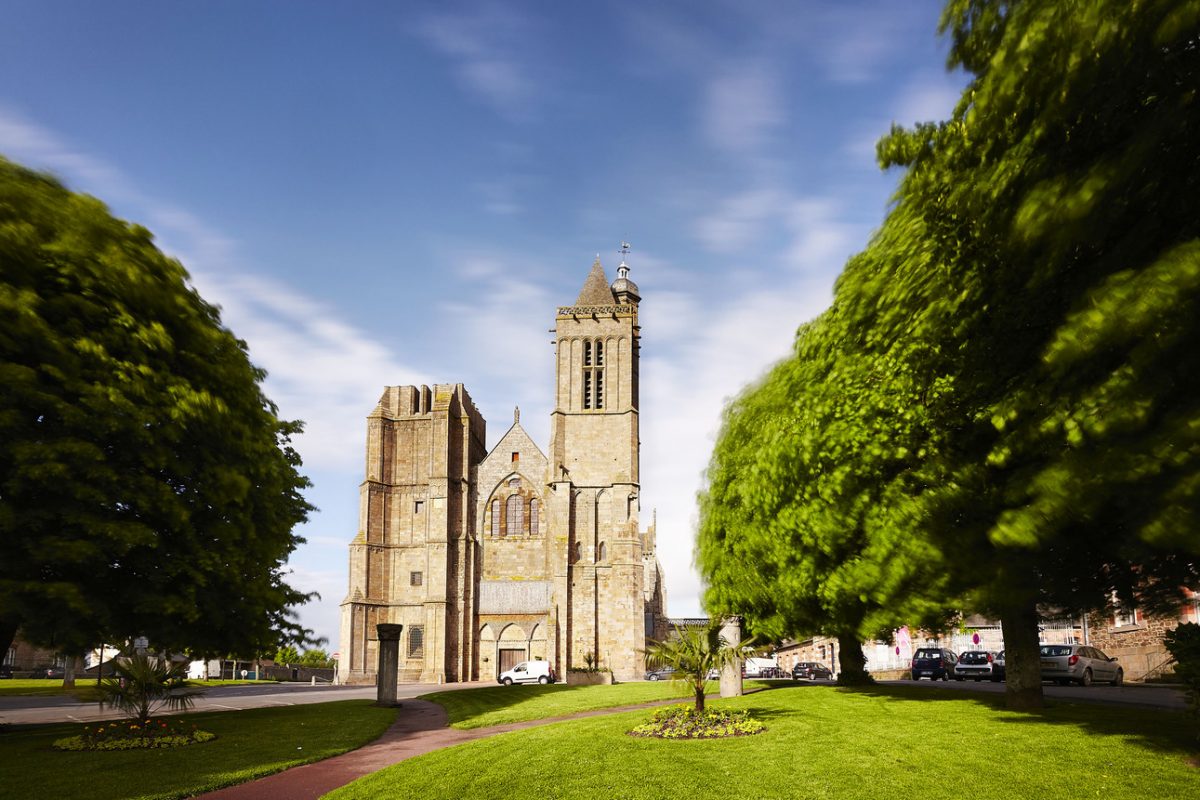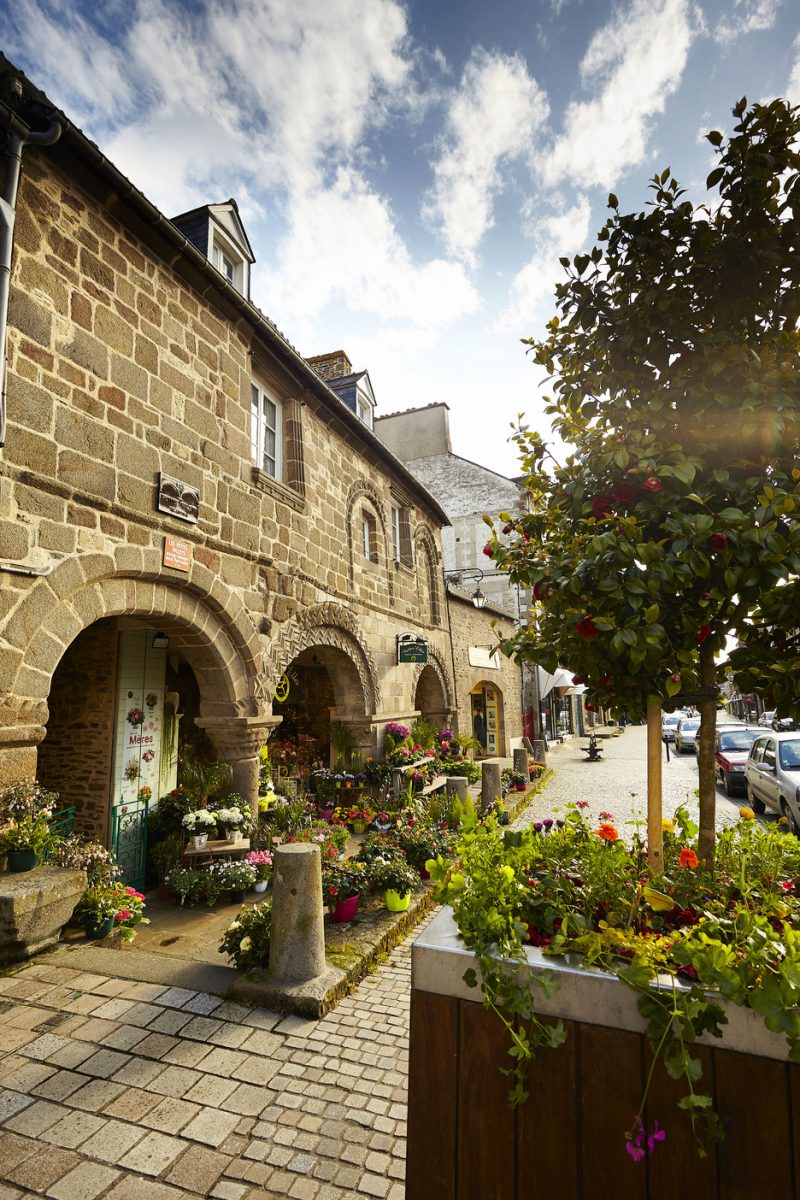Dol-de-Bretagne is a member of the “Petite Cité de Caractère”® network and located in the heart of the Bay of Mont-Saint-Michel. This former religious metropolis in Brittany is sure to amaze you with its historical and heritage treasures: from the menhir of Champ Dolent, one of the highest in Brittany, to the oldest house in the region, you’ll be enchanted as you explore its many attractions.
The Mysterious Dol
Dol-de-Bretagne, a town with a rich and prestigious past has held onto many secrets and mysteries. Over time, these have been discovered …
The town developed around a monastery founded by Saint-Samson, a Welsh monk who is said to have landed in the 6th century at the mouth of the Guyoult river. Legend has it that he met a man there whose wife and daughter were ill. In gratitude for healing the two women, the man allowed Samson to settle there.
![SMBMSM - Dol-de-Bretagne]()
Nominoë, roi breton du 9ème siècle ![SMBMSM - Dol-de-Bretagne]()
It was in the 9th century that Nominoë, a Breton king, established Dol as an archbishopric and had a cathedral built there. This was placed under the protection of a fortress, which can be seen on the Bayeux Tapestry. In 848, Nominoë was crowned King of Brittany within this cathedral.
The merchant town continued to develop, the cathedral was rebuilt and Dol became an important religious centre in the Middle Ages. First in the 13th century, and then in the 15th, ramparts were built to protect the town – but it was in the 18th century, under the bishop’s drive to develop the town, that many buildings were constructed: a bishop’s palace, a new hospital, a new seminary, a school, and more.
The town has been at the heart of all the battles fought by the Normans, the French, the English and the Bretons during the Middle Ages, later followed by the followers of the ultra-Catholic League against the supporters of Henry IV during the Wars of Religion, the Blue Republicans against the White Royalists during the Chouannerie, and finally, the German army as it met the army of the famous General Patton, who liberated the town on 4 August 1944.
Old fortifications of Dol-de-Bretagne still remain, inviting you to walk along the moat. The Grande Rue des Stuarts, the main street of the town – reminding us that Dol is the birthplace of this dynasty – is lined with timber-framed houses and is the site of the oldest house in Brittany, the Maison des Petits Palets. But the undisputed jewel of Dol-de-Bretagne is, of course, the cathedral. Some elements of the Romanesque cathedral can still be seen today. What’s more, fortifications still dominate the view on the northern flank, revealing the defensive importance of the sanctuary. The left tower of the building was never completed, due to lack of funding, but it is still said that it was the devil himself who prevented its completion.
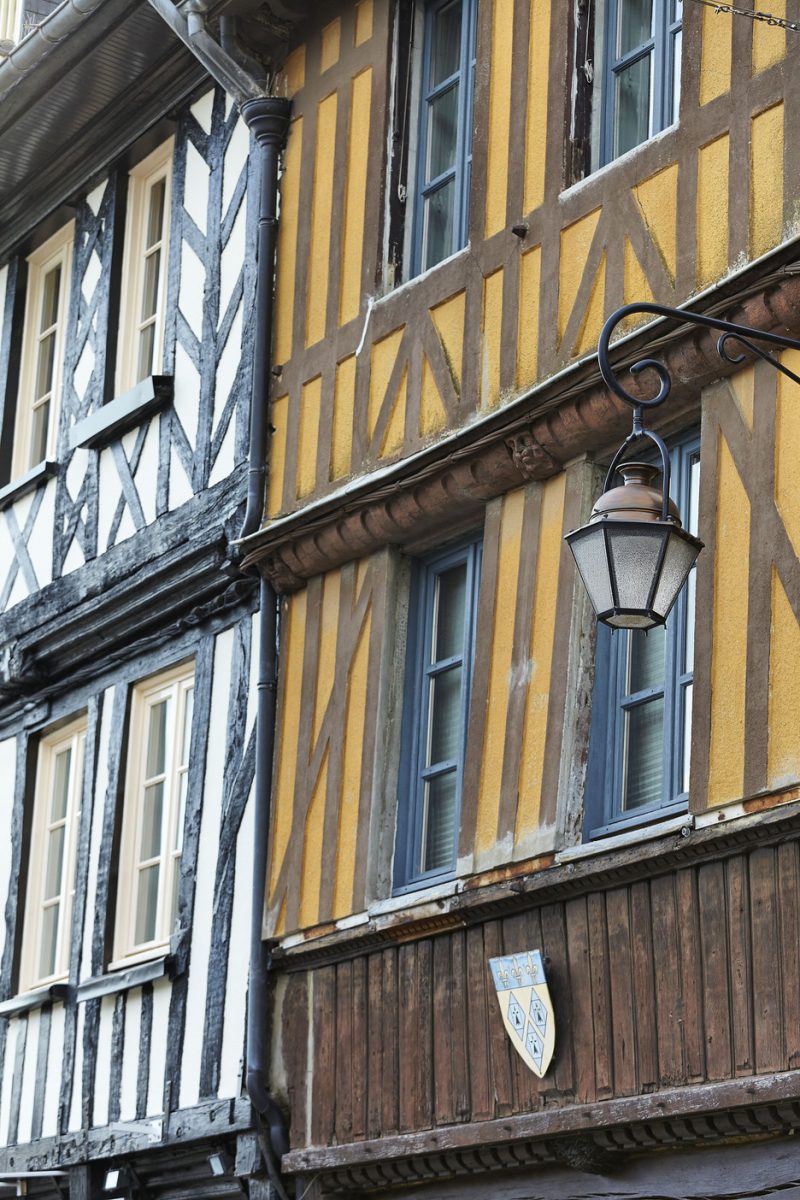
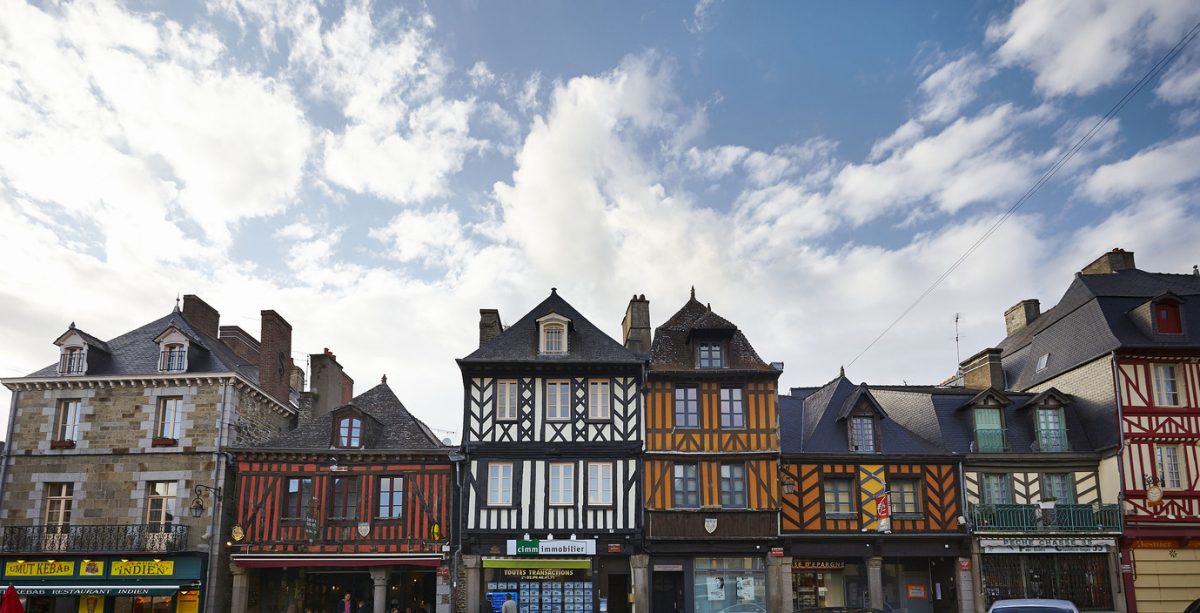
The time of the Cathedrals
The Cathedraloscope, an educational centre offering exhibition about cathedrals and their builders and ideally located in the heart of the historic town centre, allows visitors to enjoy a unique experience and learn all about the period of these buildings’ construction.
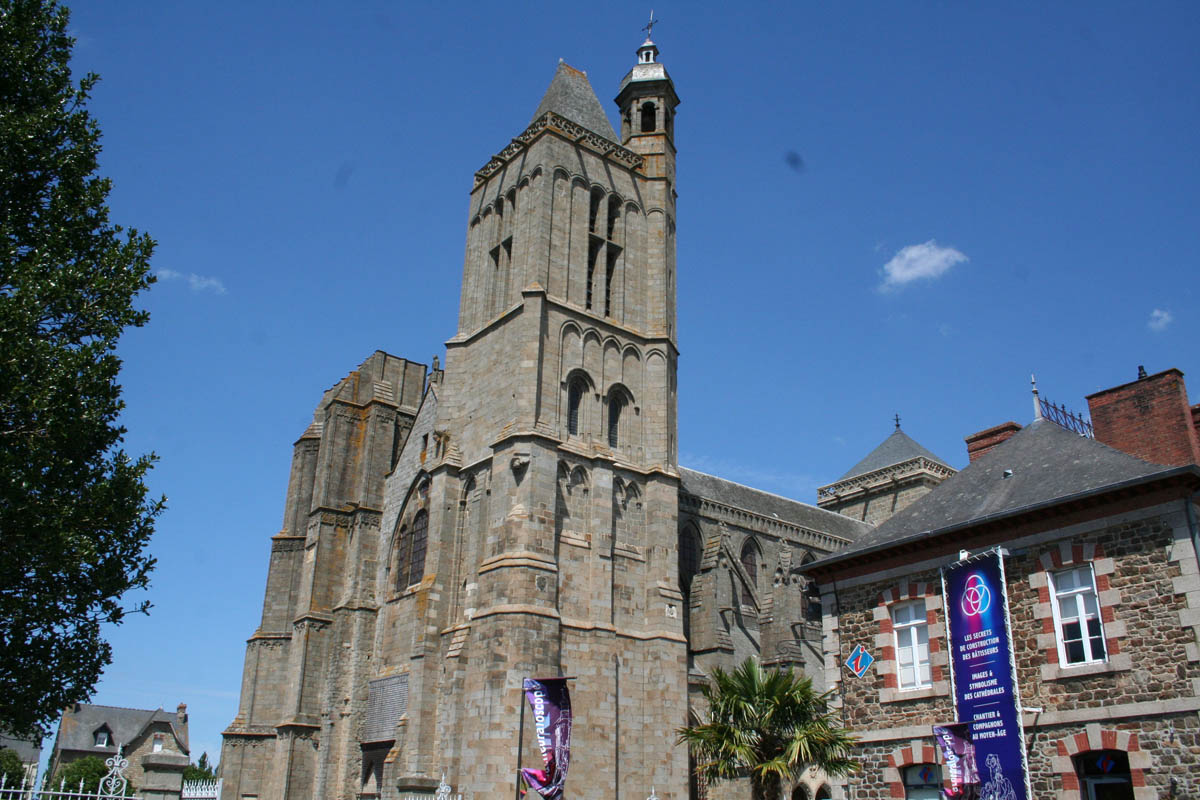
Le Mont-Dol
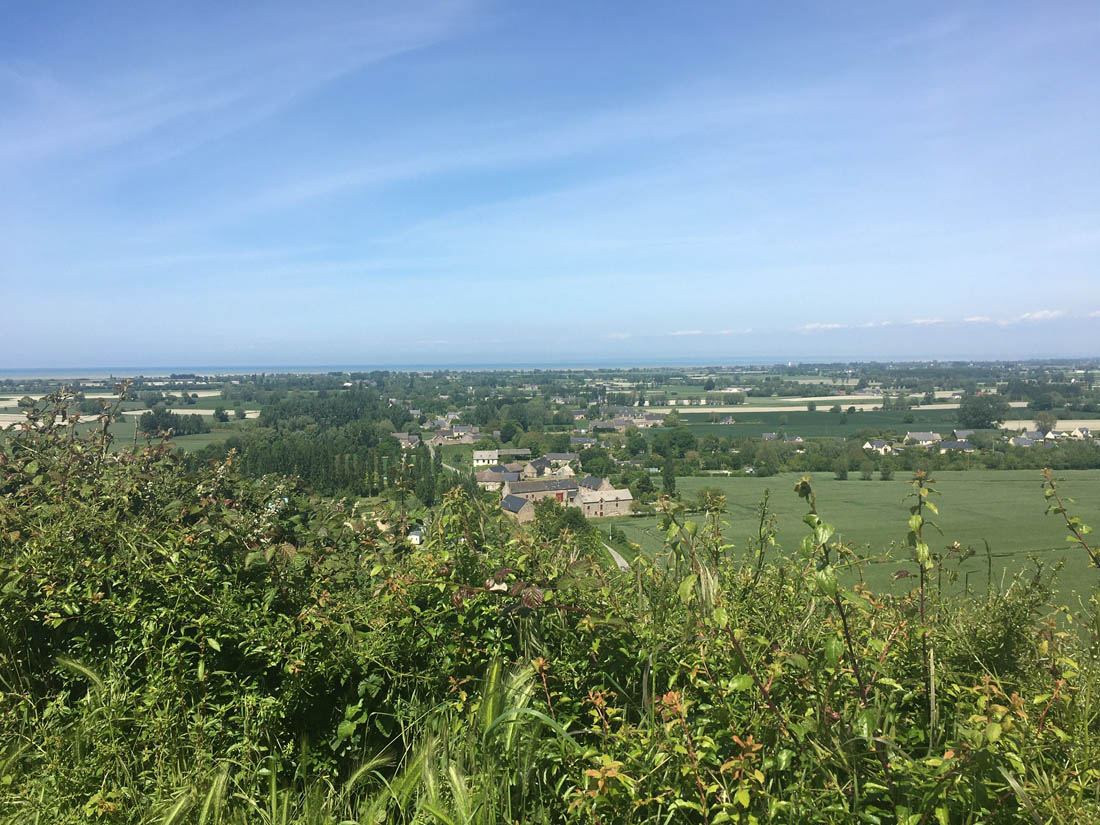
Le Mont-Dol is a small commune of 2,650 hectares with 1,109 inhabitants, incredibly rich in both history and legends.
Originally known as Lecteren, meaning the sacred place of Taranis (the Gallic God of Lightning) during the Gallic period, then Mont Jovis (the mount of Jupiter, the Roman God of Lightning), and Mont Joie after the region’s Christianisation, the town was given its final name of Mont-Dol because of its proximity to Dol-de-Bretagne, on which it was dependant in the Middle Ages. The place has been inhabited since the Quaternary – the Neanderthal period.
Indeed, 110,000 years ago, a group of hunter-gatherers settled at the foot of the south slope of the mound, which rises to 65 metres, on the site of the current cemetery. This site was discovered by quarry workers in 1872. They unearthed very large bones that they initially thought were the remains of whales. In fact, they were the remains of several mammoths! Later, they would also find the bones of woolly rhinos, bears, horses, deer … and various tools, in large quantities. This discovery makes Mont-Dol the third most important Palaeolithic site in Brittany.
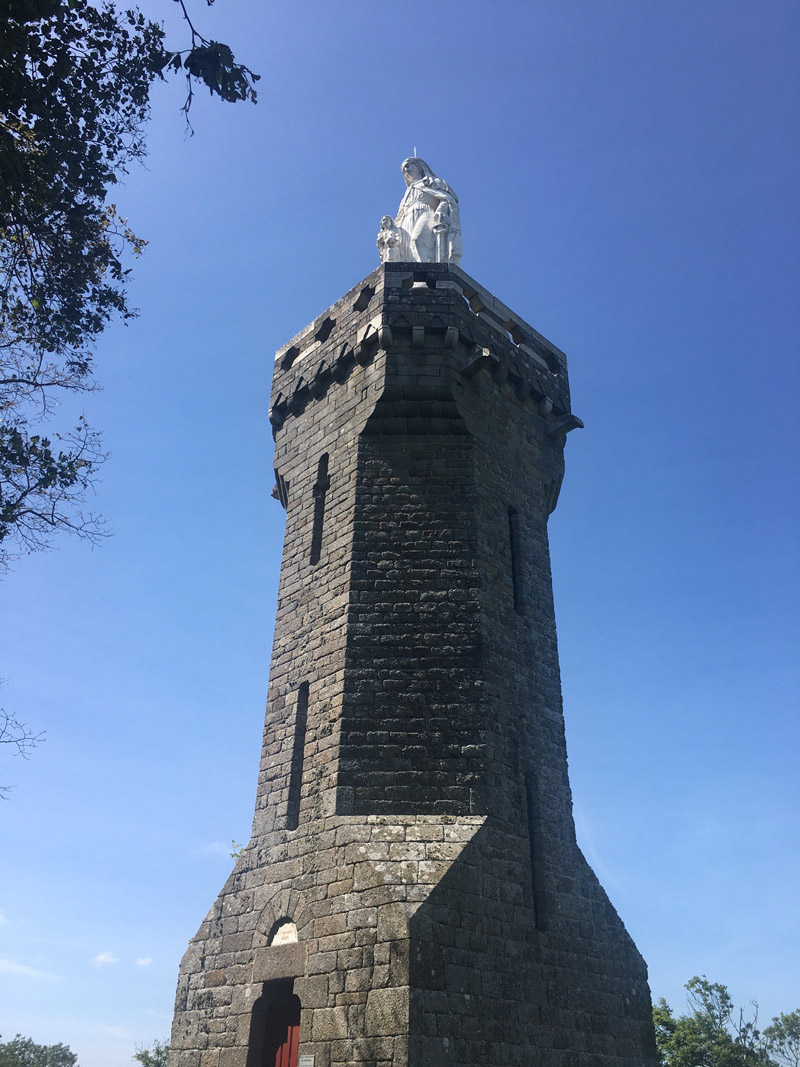
At the top of the mound, where the view extends over the entire Bay of Mont-Saint-Michel, stands the small Notre Dame de l’Espérance chapel, which replaced the old Saint-Michel chapel erected in the 6th or 7th century. In turn, the latter replaced an ancient pagan altar dedicated to the gods Taranis, then Mithra, and finally Cybèle.
Just next door, the 10-metre-high Notre Dame tower, inaugurated in 1857, consecrates Mont-Dol to Mary. A spiral staircase leads to the platform and opens onto a beautiful panorama.
The mound also houses other treasures, such as a chestnut tree with a more than respectable age, given that it has already reached its 400 years and spans almost 14 metres in circumference. It stands on the hillside, just before the top of the mountain, on the right. We can also find a pond on the mound, fed by several springs which, strangely enough, never dries up; or the 1843 windmill – in perfect working order – with its original mechanism and proudly raised fans. During the tourist season, it can be visited thanks to an association of enthusiasts, “Les Courous d’Pouchées”, who bring the building back to life just as it was in the beautiful era of the millers.
Will you be able to find the site of the battle between good and evil on the mound? Near the chapel, on the edge of the plateau, an imposing rock has a hollow on its front face: According to legend, this is the Devil’s Seat. Scratches in the stone are said to testify to the brutality of his struggle with the Archangel Michael.
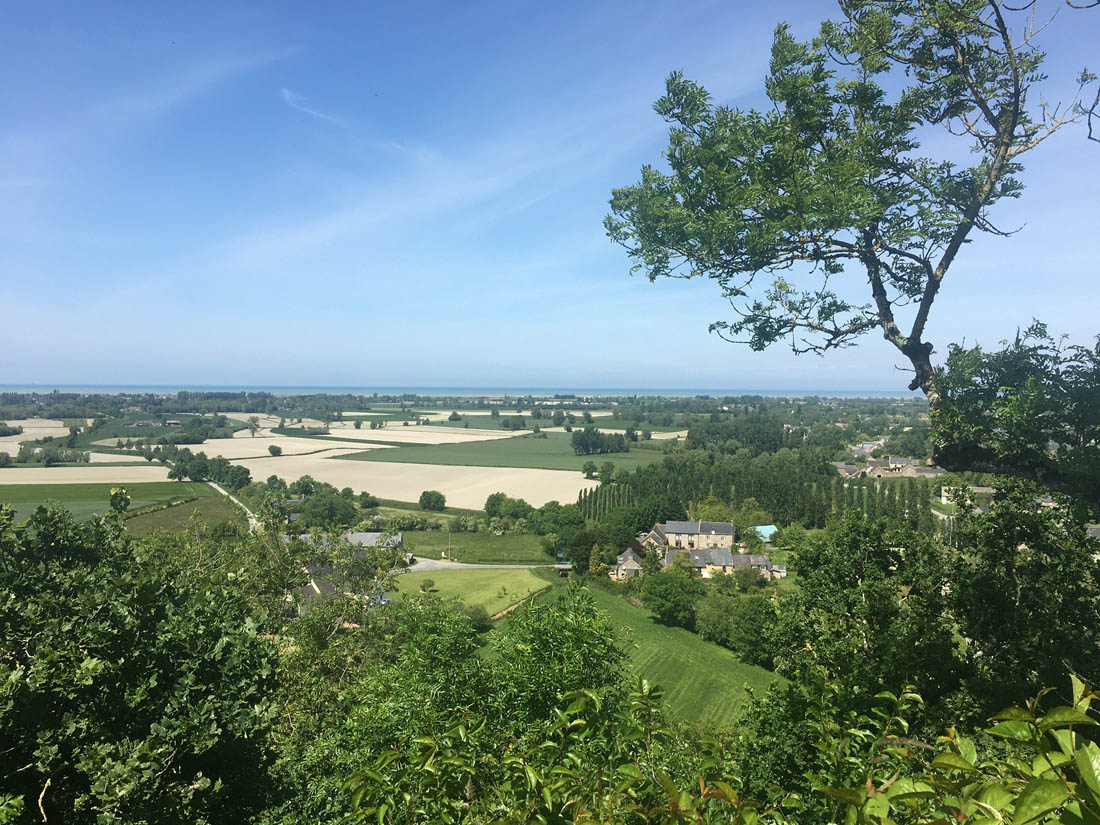
On the way back down to the village, stop and visit the Saint-Pierre church. Built in the 12th century in a very pure Romanesque style – common in Brittany at that time – it houses fabulous 15th century frescoes, partly hidden under the lime which covers the walls, representing the Passion of Christ, as well as a scene from Hell, as imagined by believers in the Middle Ages: torture wheels, dry hanging trees, wells leading to the abyss – nothing has been forgotten.
For sports fans, Mont-Dol is an ideal spot for climbing. The cliffs, with near-perfect verticality, are located in the heart of two former granite quarries, to the south and west of the mountain, and is ideal for lovers of longer climbs.
On the other hand, there are various hiking and cycling trails that criss-cross the immediate surroundings, in the heart of the white marsh.
If you have any question, please contact the Tourist Office Saint-Malo Baie du Mont Saint-Michel
+33 (0) 825 135 200 (0.15€ per min)
www.saint-malo-tourisme.com


